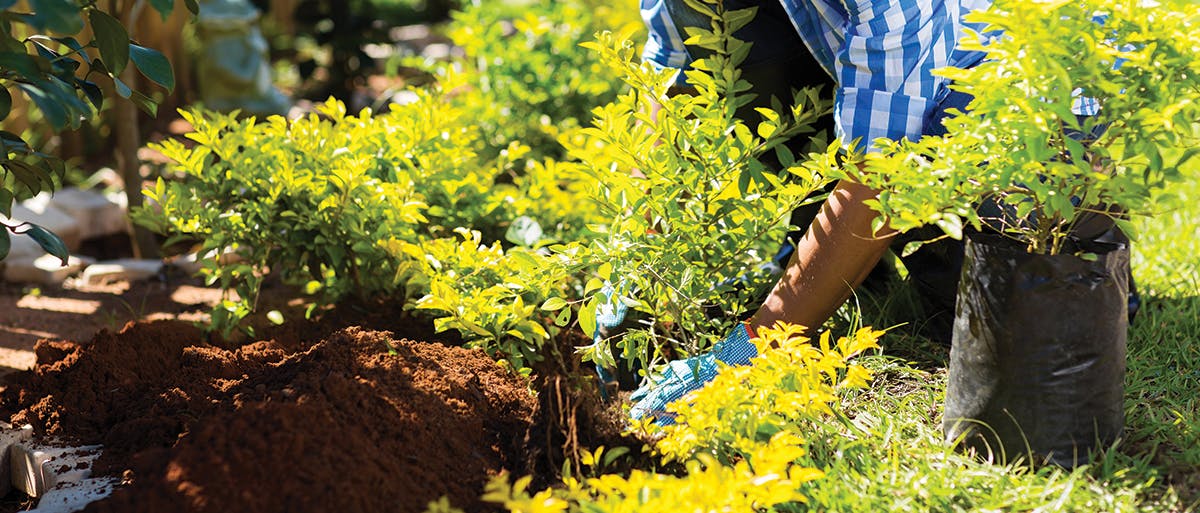
It's no coincidence one of the first items many renters add to their apartments is a plant. Having something growing in a rental unit can transform it from a generic living space into a home. It's no surprise, then, that planting trees around your buildings can create curb appeal and make them more attractive to potential renters.
In addition to the beauty they provide, trees also provide shade to keep homes cooler in the summer, decreasing cooling costs for owners and renters. They can also act as buffers against freezing winds in the winter, reducing heating costs.
Benefits of Planting Trees to Your Rental Property
Trees also tremendous value to a property, according to the results of studies compiled by the Arbor Day Foundation.
- Mature trees have a "'strong or moderate impact' on the sale-ability of homes listed for under $150,000. On homes over $250,000, this perception increases to 98%," 83% of realtors said in a study by Arbor National Mortgage & American Forests.
- According to the Council of Tree and Landscape Appraisers, "A mature tree can often have an appraised value of between $1,000 and $10,000."
- A Management Information Services/ICMA study explained, "Landscaping, especially with trees, can increase property values as much as 20%."
Trees clearly represent a potentially valuable long-term investment. If you're planning on adding new trees to your property, you can certainly save money by doing it yourself; but you need to do it the right way, starting with selecting the right type of tree.
How to Choose the Right Trees for Your Property
Climate plays a key role in the process of selecting trees for your property. Newly planted trees do best when exposed to moderate temperatures and rainfall. They need time to grow roots and acclimatize before summer heat and dryness or freezing winter weather arrive, making early spring or fall great times to plant.
Depending on your property's conditions, one species of tree may be a better choice than another. For example, oak trees like a certain degree of acidity in the soil, while willow trees love excessively moist soil.
Other things homeowners might consider are the size, privacy, shade, and color that a tree may offer.
Talk to a local arborist about choosing the right trees for your property, and be sure to consider your local climate before you buy. Even if you don't hire the arborist to plant your trees, he or she will be glad to advise you on which types to buy (and, of course, sell you some healthy trees).
How to Plant Trees & Care for Your Investment
Once you've chosen your trees, here's how you get them in the ground:
- Prepare a hole two to three times as wide as the root ball of your tree.
The most common mistake that you can make is digging a hole that's too deep or narrow. If the hole is too deep, the roots will not have access to a sufficient amount of oxygen to ensure proper growth. If the hole is too narrow, the roots will not be able to expand enough to provide an adequate foundation and source of nutrition for the tree. Before you start digging, spread a plastic tarp on the ground where you plan on depositing the dirt that you remove. This will make it easier to refill the hole. After you've created the hole, you should then roughen the sides and bottom with a pick or shovel. This will help the roots to grow into the soil.
- Place the tree in the hole.
To ensure the roots don't dry out, be firm and quick yet cautious when removing the tree from the container. This is best achieved by placing the tree in its container on its side. Once you've removed the tree from its container, loosen the roots from the sides and bottom with your hands, then gently uncurl the roots so that they are facing away from the trunk. This ensures that they won't cut into the trunk as they expand. - Position the tree.
Branches should generally be a minimum of 15 inches from power lines, roads, and other trees. If you need to reposition the tree, make sure that you're lifting it by the root ball rather than the trunk. The root ball should sit half of an inch to one inch above the surrounding soil surface so that it won't rot as it grows. Fill the hole in with loose soil, pressing down on the dirt to collapse any large air pockets in the soil to stabilize the tree. Make sure that the tree trunk is straight throughout this process. - Support the tree.
If your tree is sturdy, there's no need for extra support. If your tree does need support, however, make sure to place the stakes outside of the area that you just filled in—approximately 18 inches from the trunk on opposite sides. From the stakes, place tree tape loosely around the trunk, allowing the tree to move slightly in strong winds. You can generally remove the stakes after 6 to 12 months. - Water the tree.
Make sure to water the tree consistently after planting it. Your tree is going to need about 15 gallons of water over the next couple of weeks. As the tree's roots gradually reach the outside soil, they'll need to be watered less and less. - Add mulch.
Fertilizer is little to no help and could even be harmful to your new tree, but do go for mulch. Cover the planting area with a 4-inch layer of mulch, keeping it at least 2 inches away from the trunk's base. According to landscape supply company Fra-dor, Inc., mulch serves several important purposes. As a protective layer, mulch guards against harmful variations in soil temperature, traps the moisture in the soil, and prevents weed growth. Mulch also prevents a hard crust from forming on the soil's surface, and it serves as a great reminder to avoid stepping on or mowing around the tree. In addition to mulch, newly planted trees can benefit from mycorrhizal fungi. Adding this fungus to your soil promotes root growth and discourages damaging fungi that could ruin the tree's development. - Check your work.
Now that your tree has been planted, there are two common hazards that you'll want to avoid. Avoid drowning your tree by double-checking the moisture of the soil around your tree at a depth of 4–6 inches. It should be moist, not soggy. The soil surface conditions are much different than what's underneath, so don't let that fool you. Also avoid suffocating your tree. Your tree shouldn't be too deep in the soil. The root crown, which is where trunk meets the roots, should be 1.5 to 2 inches above the ground. - Prune the tree.
Now that your tree is safe and sound in the ground, it's critical to keep up on its pruning. Start pruning your trees while they are young will mean easier maintenance and less corrective action in the future. It's best to prune in the spring or fall—it's a common chore to do after the coldest part of winter has passed and trimming during the tree's dormancy allows for a very fertile spring. Pruning in the summer, after the seasonal growth is over, is also an option. The trees you add to your yard may require special attention for a time, but the shade, beauty, environmental benefits, and financial payoff that they provide to our homes, neighborhoods, and planet are well worth it.
